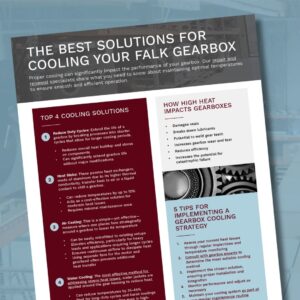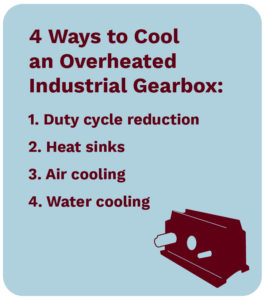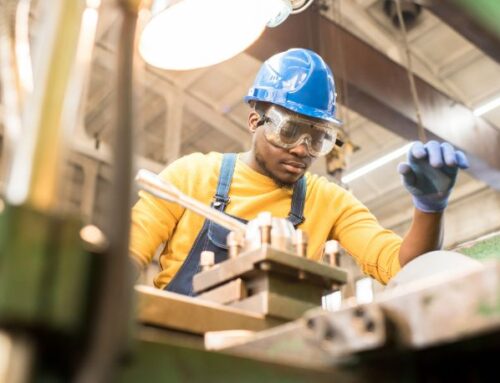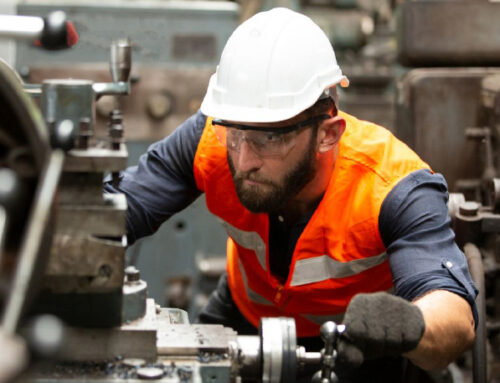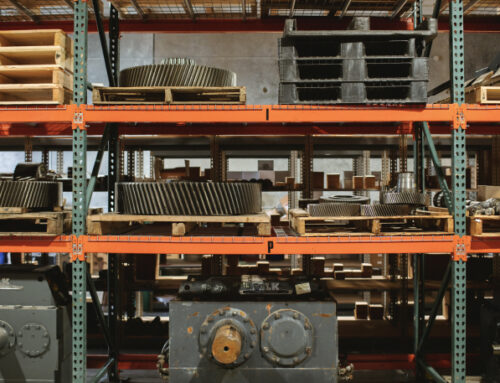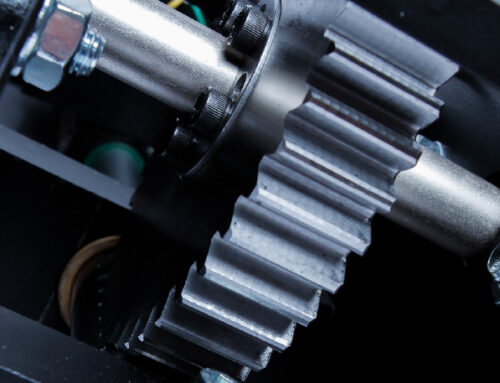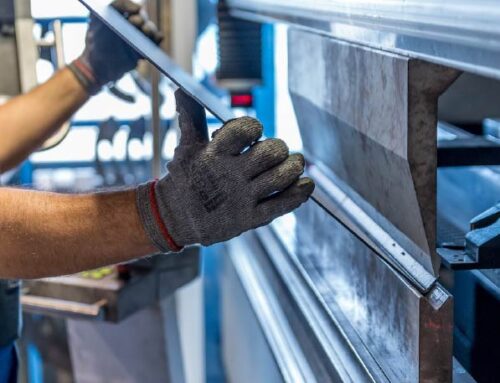When an industrial gearbox overheats, many components can be damaged. This can include its filtration system, which may then require repair services. An industrial gearbox can overheat due to a number of root causes. It is important to thoroughly investigate the cause so that it can be addressed and remedied.
How to Investigate Gearbox Overheating
The first step in the investigation into why an industrial gearbox has overheated is to gather data.
The following information must be collected:
- Operating temperature of the industrial gearbox
- Ambient temperature and the environmental conditions of the application
- The OEM-specified lubricant requirements if the gear reducer is running within OEM recommendations
- The viscosity index of the lubricant, for both mineral and synthetic oils
- Conditions such as the load and operating speeds
- The contamination levels or particle counts
Heat can cause extensive damage to gears, reducing their operating life dramatically. High temperatures are a concern when it comes to gear reducers whether the source is from a continuous or intermittent operation.
How Heat Damages an Industrial Gearbox
One of the biggest impacts heat has on gear reducers is lubricant damage. Many common lubricants begin to break down as the heat increases its viscosity. When this happens, the lubricant loses efficiency, allowing more metal-to-metal contact, increasing friction and heat.
It can even take a toll on the fluid seal. The pressure building in the industrial gearbox can stress rubber seals causing the seals to dry out and become brittle. The seal’s integrity breaks down, allowing for contamination ingress and oil leakage.
Download the Guide:
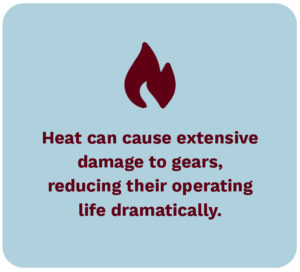
When the heat suddenly spikes, this can cause the mating teeth to destroy the oil between them, welding them together. As the gear rotates, the bond is broken and the tooth surface fractures.
4 Ways to Cool an Overheated Industrial Gearbox
There are four methods of cooling an overheated industrial gearbox that are most effective:
- Duty cycle reduction
- Heat sinks
- Air cooling
- Water cooling
1) Duty Cycle Reduction
When a gearbox is operating under a normal duty cycle, the temperature increases moderately and doesn’t harm the gear or the bearings. But, a long duty cycle can create higher temperatures and maintain that high temperature for a long time. This leads to component wear and fatigue.
By shortening the duty cycle, you can reduce the temperature. This is only possible if the application can allow for a shorter duty cycle. By breaking up the cycle into smaller periods, you can allow for intermittent periods to help the gearbox cool before the next cycle.
2) Heat Sinks
A heat sink is a passive heat exchanger that transfers heat from a gearbox to a fluid medium, like air or a liquid coolant where it dissipates, allowing for the temperature regulation. The best heat sinks contain aluminum because of its high level of thermal conductivity. A gearbox mounted on an aluminum table can run 10% cooler than when mounted on a different type of metal surface.
3) Air Cooling
When the application doesn’t allow for shorter duty cycles or a heat sink, you can incorporate air cooling.
An air cooling system can be as simple as installing a fan so that it blows air on the gearbox. If the motor and gearhead are attached, use two fans to cool them separately and position the fans so that heat is not blown onto the gearhead.
Air cooling can be used for applications that require heavy loading or long duty cycles.
4) Water Cooling
Water cooling is the most effective method of cooling and is recommended for long duty cycles and harsh loadings. A water jacket is installed around the gear housing and room temperature water flows through the jacket, reducing the temperature by 35-45%.
Industrial Surplus Gear Reducer Parts & Repair Experts
NW Industrial Sales, LLC can help you find a new gear reducer perfect for your application. With our over 70 years of combined experience serving multiple industries, we have the expertise to create the perfect solution to reduce downtime.
We also have a large inventory of surplus Falk gear reducers and gearbox parts. As agents of Rexnord Industrial Services, our customers also gain access to their nationwide maintenance network.
If you want to learn more or speak with one of our specialists, contact us today. We are available 24/7 to assist you.

